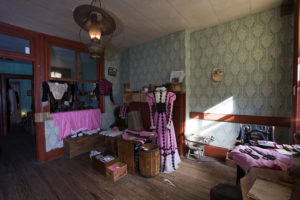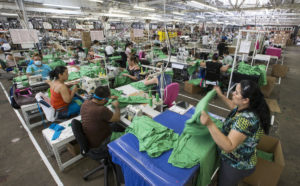Sweatshops of the Past and Present: Uncovered
After leaving the Tenement Museum, my knowledge of sweatshops and its workers expanded beyond my imagination. As our tour guide, Joshua, transported us back into the 1800s traveling through the single home of hundreds of immigrants, we learned that the individuals residing in the tenement house also ran their businesses within the small confinement of their four walls. A distinct difference between the sweatshops in the past and those operated today are the locations. While past sweatshops were operated within the homespace, given a designated spot in the living room, the sweatshops operating today are more so located in factories or confined workplaces. A significant difference between the sweatshops of the past and those in present-day is the advancement in technology and efficiency. In the past, individuals working in sweatshops were forced to breath in fabric dust, which was fatal. The Levine family we learned about had their own family business designated in their living room space (pictured below). Nowadays, the sweatshops are more modern and depict a more factory-like environment, compared to the home environment that was used in the late 1800s.

Compared to today, wages in both eras are low, and workers are underpaid for their labor. The Levine family’s rent was fifteen dollars a month while they sold dresses for ten dollars each piece.^1 Today, there are existing sweatshops for large companies, such as Forever 21. One of the workers was earning six dollars an hour for pinning tags on shirts and cutting their loose threads.^2 Most of these workers, unlike history’s, were women.

Upon entering a new nation, there are more opportunities, but that does not mean that those opportunities have been granted. Immigration and sweatshops are typically interconnected because immigrants are more willing to conduct this type of work than those who are native to the nation and dominate the language. Immigrants’ options are limited, so they are more accepting of any opportunities coming their ways. The Levine family immigrated, and like others’ situations, “They had few skills and little money. They couldn’t really read or write and they didn’t speak English. Needing to support themselves and their five children, the Levines, like many other immigrants in the area, literally set up shop in their home.”^3 Immigrants did not have many options, so they were willing to make do with whatever came their way in order to support their families.

Considering their harsh conditions, sweatshops can be beneficial for immigrants and other workers only in the sense of getting acclimated to surroundings and the language. There are no monetary upsides as workers are extremely underpaid for the amount of work and hours they put into production, but as discussed on the tour, sweatshops were often the places where individuals met their spouses and worked with their families. For immigrants, sweatshops allowed families to stay together while navigating their way into their new residing nation. On the contrary, sweatshops are not all that beneficial to natives or citizens of a nation. Being a native-born citizen already elicits an advantage in which he/she is exposed to more opportunities in education, work opportunities, and financial stability. There is more aid that is able to be provided to the citizens given the circumstances of their situations. Sweatshops benefit large companies/corporations, as seen in retailers such as Forever 21.^4 They save money since they pay people less for their labor while they earn more profit from their products, benefitting in both areas of production and labor. Sweatshops benefit the large companies, but they take more from their workers than they give them.
Bibliography
(^2, ^4) Kitroeff, Natalie, and Victoria Kim. “Behind a $13 Shirt, a $6-an-Hour Worker.” Los Angeles Times. Los Angeles Times, August 31, 2017.
(Image 1, ^1, ^3)Wanderer, The World, and Monica Suma. “The Tenement Museum, Immigration and My Grandmother.” Monica Suma, August 13, 2013.